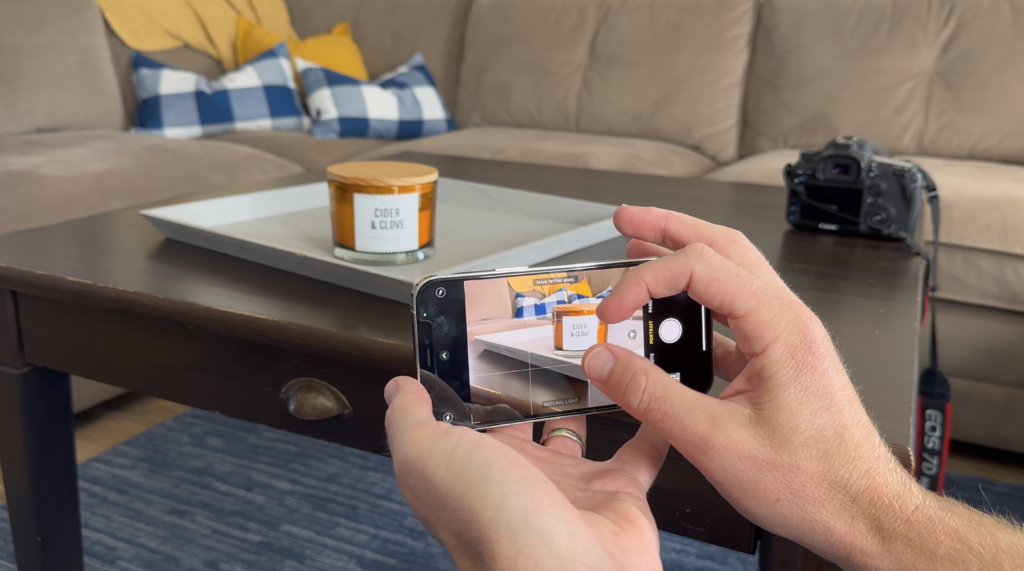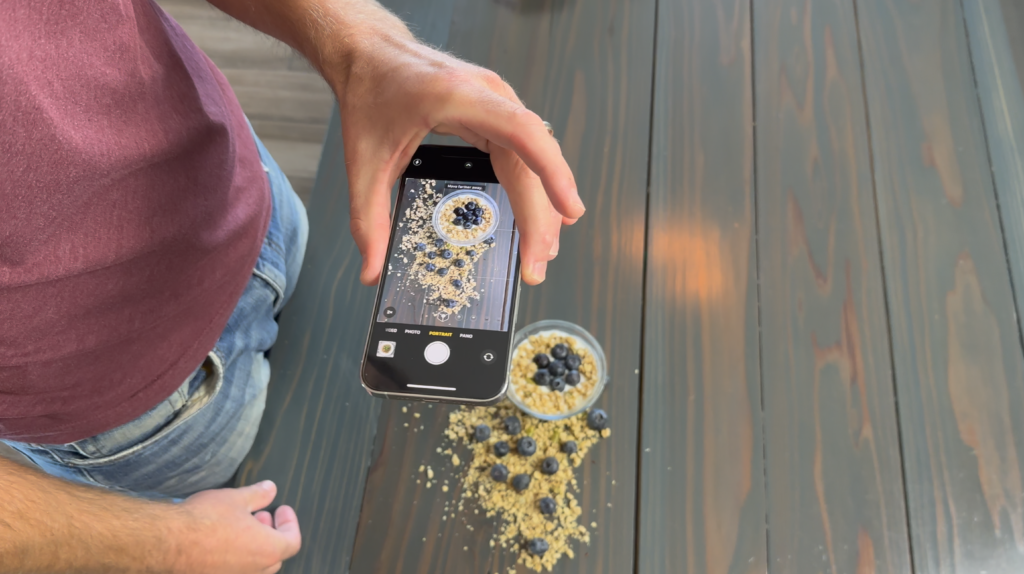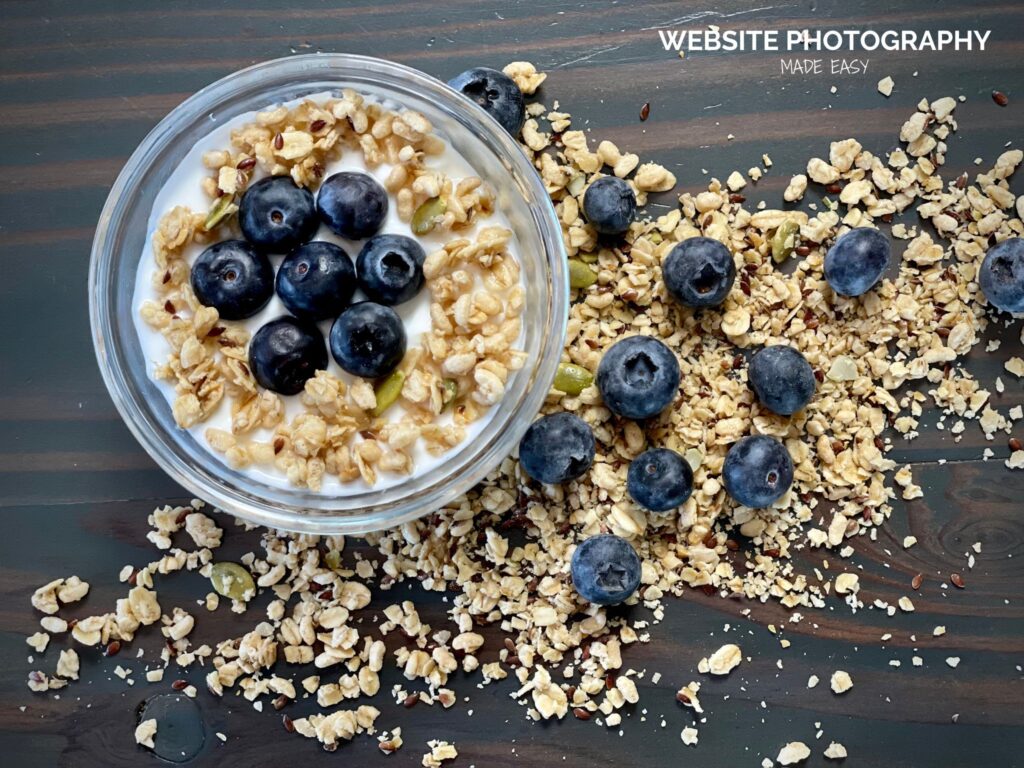As a professional photographer turned website and SEO expert, I get asked: “Are iPhone photos good enough for a website?” It’s a valid question, especially given the increasing quality of smartphone cameras. And, I can give you a definitive answer.
Quick Navigation
Are iPhone Photos Good Enough for a Website?
Thanks to their high resolution and advanced image processing capabilities, iPhone 12, iPhone 13, and iPhone 14 photos are plenty good enough for websites. When optimized correctly, they offer a balance between aesthetics and site performance, ensuring a smooth and visually appealing user experience. They’re an excellent choice for website imagery.
Why Listen to Me? I was a professional photographer (Bauman Photographers) for 12 years. I educated pro photographers at the highest level (Creative Live). I now run a marketing agency that grows and manages websites for businesses (201 Creative). We have a course on how to take pictures for your website with an iPhone.

Photo Characteristics Needed for Websites
When it comes to using photos on a website, a balance must be struck between aesthetics and functionality. This includes factors like image quality, file size, and loading speed, as well as the overall visual coherence of the website.
The iPhone allows you to take your own photos for your website, provided you know what to do. Lets look at what makes it possible for these photos to be good enough for your site:
Image Quality
Image quality, of course, is vital. High-quality images can significantly enhance a user’s experience, communicate professionalism, and reinforce branding.
iPhone photos, thanks to their high resolution and the advanced image processing capabilities of the device, can meet this need in many cases.
However, high-resolution images often come with large file sizes, which can pose a challenge. Larger files take longer to load, which can negatively impact user experience. Studies have shown that slower page load times can lead to higher bounce rates and lower conversions.
Fortunately, iPhone photos typically have smaller file sizes compared to images from professional-grade cameras, without a significant compromise in quality. This balance makes them an excellent choice for website use. They provide the necessary image quality while helping to maintain optimal site speed.
Website Branding
Beyond these technical considerations, there’s also the matter of visual coherence. The images on a website need to align with its overall design and branding.
The iPhone’s extensive photo editing tools and third-party apps allow you to adjust the look of your photos to match your website’s aesthetic, whether that’s adjusting colors, applying filters, or adding text overlays.
When considering the use of iPhone photos on a website, it’s not just about the quality of the images themselves. It’s also about how well those images integrate with the website’s design and function, and how they contribute to the user’s experience.
iPhone vs DSLR
When we talk about resolution in photography, we often refer to the number of megapixels a camera has. A megapixel is one million pixels, and pixels are the tiny squares of color that make up a digital image. The more pixels an image has, the more detail it can display.
As of 2023, the latest iPhone models, like the iPhone 14 standard, Plus, Pro and Pro Max, come with a 48-megapixel camera for each of its three lenses (wide, ultra-wide, and telephoto).
On the other hand, professional DSLR cameras can have a much higher megapixel count. For instance, a Sony a7r V has a whopping 61 megapixels. This allows for capturing an incredible amount of detail, far more than any smartphone camera.
However, more megapixels do not necessarily translate into better image quality. It’s also about the size and quality of the sensor, the lens quality, and the image processing capabilities. While DSLRs have larger sensors and often superior lenses, iPhones have made significant strides in computational photography, using advanced algorithms and machine learning to enhance image quality.
| Megapixels | |
| iPhone 12 | 12 |
| Canon EOS 5DS | 51 |
For most websites, a 12-megapixel image from an iPhone is more than sufficient. A higher megapixel count may be advantageous for large format prints or where heavy cropping is necessary, but for website display, 12 megapixels provides a detailed, clear image.

Moreover, web images are usually compressed to reduce file size and speed up page loading times. This means that much of the extra detail captured by a higher megapixel camera may be lost during compression.
While a professional DSLR offers superior resolution and detail, iPhone photos are more than capable of delivering high-quality images suitable for websites. The key is in understanding the requirements of your website and using the tool that best meets those needs.
Why iPhone Photos Work on Websites
When assessing the quality of iPhone images, several factors come into play. These include resolution, lighting, composition, and post-processing.
What makes iPhone photos good enough for websites? Several key factors come into play, including resolution, lighting, composition, and post-processing. Once you learn how to take photos for your website with a smart phone, you can overcome the few weaknesses they pose.
Image Resolution
The resolution of an image largely determines its clarity. The most recent iPhones as of 2023, like the iPhone 13 Pro and Pro Max, are equipped with a triple camera setup that includes wide, ultra-wide, and telephoto lenses.
All of these lenses can capture images at a 12-megapixel resolution, which is more than sufficient for producing clear, detailed images for websites.
Portrait Mode
Portrait mode, first introduced with the iPhone 7 Plus, has been a game-changer in smartphone photography and for website photos. It uses the iPhone’s dual-lens setup (or advanced machine learning in single-lens devices like the iPhone XR) to create a depth-of-field effect.
This effect sharpens the subject in the foreground while blurring the background, mimicking the ‘bokeh’ effect typically associated with professional DSLR cameras.

For website photos, Portrait mode is particularly beneficial. It allows you to highlight products or subjects, drawing viewers’ attention precisely where you want it.
It’s excellent for product photography, headshots, or any image where you want the subject to stand out from the background.
Post Processing & Editing Capabilities
Finally, post-processing can greatly enhance the quality of iPhone images. iPhones now have the ability to shoot in Apple ProRAW format. This format provides more flexibility during post-processing.
It allows for adjustments to be made to exposure, colors, and other elements with minimal loss of detail.
With previous smartphones, photographers would have to take their photos over to a photo editing software like Lightroom or Photoshop.
Now, users can edit their photos in camera. And editing options are robust – the majority of options that are available on professional editing systems are now embedded in the iPhone.
Lighting Capabilities
Lighting plays a crucial role in photography, and iPhones have continually improved in this area. Features like night mode and Smart HDR have been game-changers:
- Night mode uses advanced algorithms to brighten photos in low-light conditions while reducing noise.
- Smart HDR, on the other hand, uses machine learning to adjust the lighting in different parts of an image, resulting in balanced and natural-looking photos even in challenging lighting conditions.
Composition Assistance
The composition is another important aspect of image quality. While this is largely down to the photographer’s skill, iPhones offer features that can help.
- The rule of thirds grid, for example, can assist in composing well-balanced shots.
- The newer models also have a LiDAR scanner, which helps with depth perception and can improve the look of portrait mode photos.
In short, with the right knowledge and skills, it is entirely possible to create high-quality, professional-looking images using an iPhone. The continuous advancements in iPhone camera technology and image processing capabilities make this an increasingly viable option.

Evolution of Smartphone Photography
iPhone images didn’t used to be good enough for websites. As a matter of fact, its only recently that I would recommend them.
The evolution of smartphone photography, particularly with iPhones, is a testament to the rapid advancements in technology over the past decade. When the original iPhone was launched in 2007, it featured a 2-megapixel camera, which was a significant achievement at the time].
The real game-changer came in 2010 with the introduction of the iPhone 4. It featured a 5-megapixel camera, an LED flash, and for the first time, the ability to record HD video. The smartphone camera race had truly begun.
As newer models were released, each brought with it notable advancements. The iPhone 4s in 2011 introduced an 8-megapixel camera with improved aperture for better low light photography. The iPhone 5s, launched in 2013, introduced a larger sensor and the True Tone flash system for more accurate color reproduction.
2014’s iPhone 6 saw the addition of Focus Pixels, which improved autofocus speed and accuracy. By 2015, with the release of the iPhone 6s, the camera resolution was bumped up to 12 megapixels, where it has remained since.
The iPhone 7 Plus, introduced in 2016, featured a dual-lens setup, enabling optical zoom and a portrait mode with depth-of-field effects. This innovation brought DSLR-like capabilities to a device that could fit in your pocket.

Fast forward to the iPhone 12 Pro Max in 2020, which boasts a sophisticated camera system with advanced features such as Dolby Vision HDR recording, sensor-shift optical image stabilization, and Apple ProRAW for professional-level editing control.
Today, iPhone photography isn’t just about megapixels; it’s about computational photography capabilities that leverage the power of hardware, software, and machine learning to produce stunning images. Features such as Night mode, Deep Fusion, and Smart HDR have revolutionized what’s possible with a smartphone camera.
Conclusion
Are iPhone photos good enough for a website? The answer is, for most purposes, a resounding yes. As long as you understand the principles of good photography and post-processing, an iPhone can be a powerful tool for creating compelling web content.
However, it’s also essential to recognize that their are still situations where professional photography and equipment is still superior. Still, though, for the majority of content creators, using the iPhone will more than suffice.

